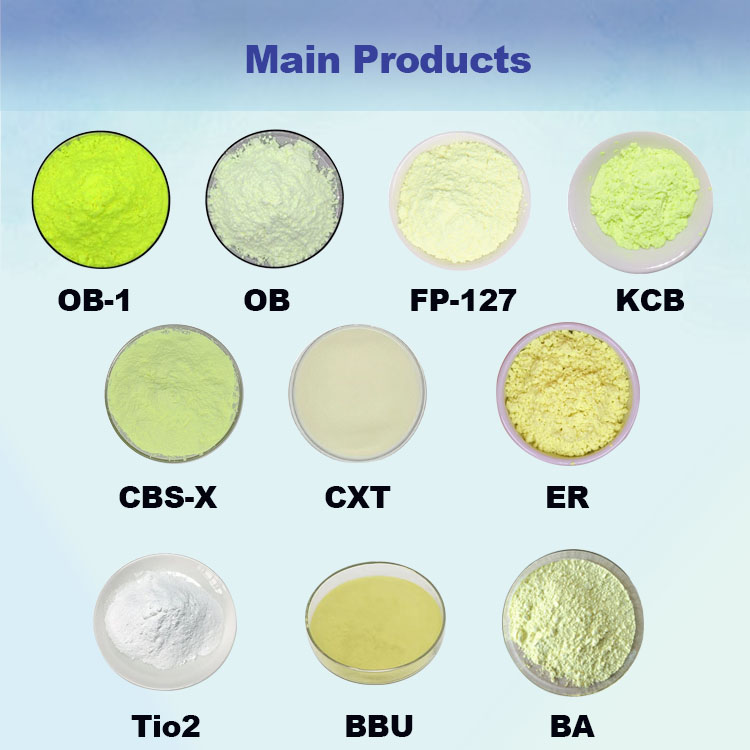Basic knowledge of fluorescent whitening agents
2023-04-23
The common English name of fluorescent whitening agent is: Optical Brightening Agent or Optical Brightener Fluorescent Whitening Agent, abbreviated as FWA; Fluorescent Brightener, abbreviated as FB, Abbreviated as 0BA; Fluorescent Brightening Agent, abbreviated as FBA.

Fluorescent brighteners can actually be regarded as white dyes or fluorescent dyes, so they are listed in the category of dyes abroad. They are also called as fluorescent brighteners or optical brighteners in the Dye Clues (English name: Colour Index, hereinafter referred to as C.I.). In China, fluorescent brighteners are included in the category of printing and dyeing auxiliaries, known as "brighteners" or "fluorescent brighteners"; In Japan, fluorescent brighteners are referred to as "fluorescent dyes".
1. Definition of fluorescent whitening agents
Characteristics of fluorescent whitening agents
Its characteristic is that it can stimulate incident light to produce fluorescence, causing the dyed material to achieve a sparkling effect similar to fluorspar, making the material visible to the naked eye very white, achieving the effect of whitening.
Definition of fluorescent whitening agents (key points)
Fluorescent whitening agent is a colorless or light colored organic compound that can absorb near-ultraviolet light (between 300-400nm) that is invisible to the human eye, and then emit blue purple fluorescence (between 420-480nm) that is visible to the human eye.
Fluorescent brightener is a fluorescent dye, also known as a white dye, and a complex organic compound.
2. The role of fluorescent whitening agents
Brightening
The Whitening Principle of Fluorescent Whitening Agents
Before understanding the principle of whitening, it is necessary to first understand what complementary colors are. Red, blue, and yellow are called the three primary colors, and through their mixing, almost all colors can be brought out. Moreover, when two colors of light are mixed and the result is white, these two colors are called complementary colors to each other, that is, the colors located on the diagonal of the color ring in the figure below are complementary colors to each other. From this picture, we can know that the yellowing of the object is due to insufficient blue light and loss of balance.
Fluorescent whitening agents absorb invisible ultraviolet light and then emit it in the form of blue purple fluorescence. This blue purple fluorescence is mixed with the yellow light on the object (yellow is the complementary color of blue purple) to obtain white light, thereby achieving the effect of whitening and brightening.
The Brightening Principle of Fluorescent Whitening Agents
Ultraviolet (UV) is divided into four types in vacuum: short wave, medium wave, long wave, and ultra long wave. Ultraviolet refers to the general term of radiation with wavelength from 10nm to 400nm in the electromagnetic spectrum, which can not be seen by people. Short wave blue light has wavelengths between 400nm-480nm, is visible to the naked eye and has relatively high energy.
According to the whitening principle of fluorescent whitening agents, the main characteristics of fluorescent whitening agents are to absorb invisible ultraviolet rays and emit visible blue-violet light, increasing the total amount of reflection of the item and making it appear more bright and bright.
Fluorescent whitening agents have the characteristic of absorbing ultraviolet rays and can effectively protect items from UV damage, extending their service life. Based on the characteristics of fluorescent whitening agents, everyone can use their imagination and use fluorescent whitening agents for any product that needs brightening and UV protection.
 English
English



